Mathias Dietz
Statistics of the interaural parameters for dichotic tones in diotic noise ($N_0 S_ψ$)
Jul 12, 2022



Abstract:Stimuli consisting of an interaurally phase-shifted tone in diotic noise -- often referred to as $N_0 S_\psi$ -- are commonly used in the field of binaural hearing. As a consequence of mixing diotic noise with a dichotic tone, this type of stimulus contains random fluctuations in both interaural phase- and level-difference. This study reports the joint probability density functions of the two interaural differences as a function of amplitude and interaural phase of the tone. Furthermore, a second joint probability density function for interaural phase differences and the instantaneous power of the stimulus is derived.
The complex-valued correlation coefficient accounts for binaural detection
Nov 08, 2021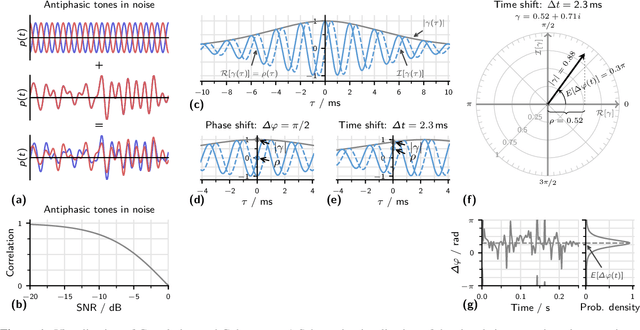

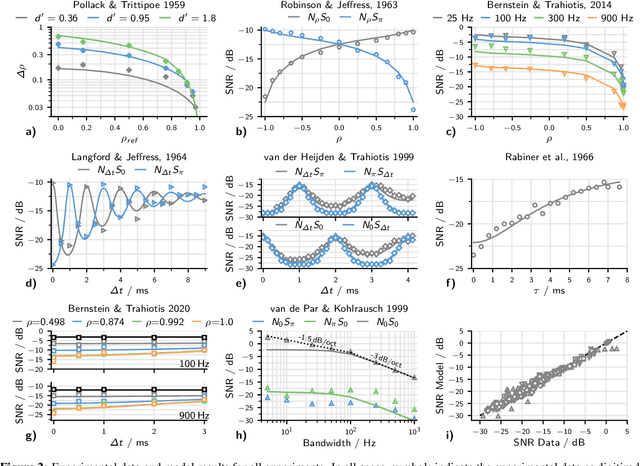
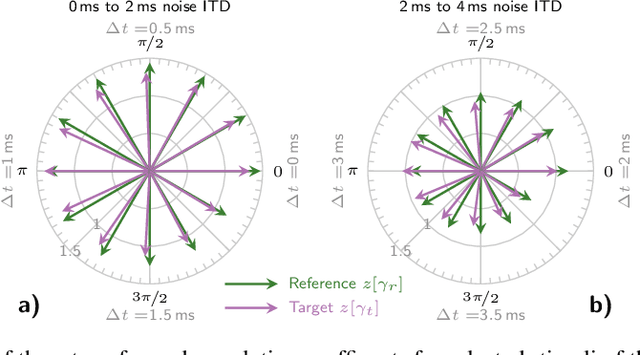
Abstract:Binaural hearing is one of the principal mechanisms enabling the localization of sound sources in space. In addition, binaural hearing also significantly improves the ability to detect signals in noise. Humans can detect interaurally anti-phasic tones in masking noise at sound levels 15 dB below the detection threshold of the equivalent in-phase tones. Intermediate thresholds result from detecting tones in noise with an interaural time difference (ITD). The ITD dependence has been most accurately accounted for by models using an internal delay-line mechanism. The delay lines, or an equivalent mechanism, however, have not been found in mammals. Alternative coding principles that do not include delay lines can explain many aspects of sound localization but have failed to account for some of the available data on binaural detection. By employing the complex-valued correlation coefficient, we show that a minimum assumption model can explain the outcome of a wide range of binaural detection experiments. The proposed mechanism requires fewer degrees of freedom when compared to delay-line models while arguably improving compatibility with mammalian physiology. The study also shows that the 2-dimensional acoustic feature space of complex correlation coefficients is at the same time a perceptually uniform space for binaural detection.
Interaural Coherence Across Frequency Channels Accounts for Binaural Detection in Complex Maskers
Oct 06, 2021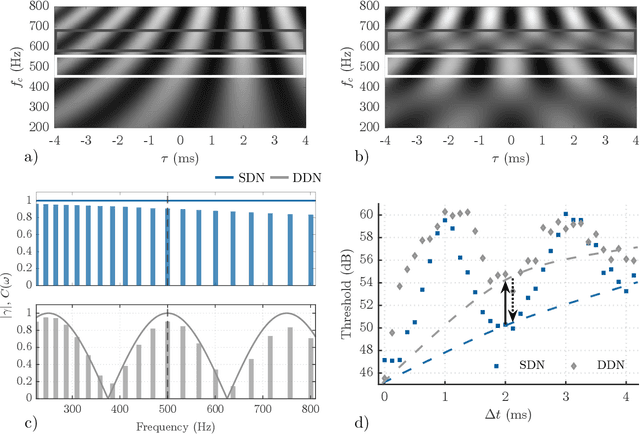

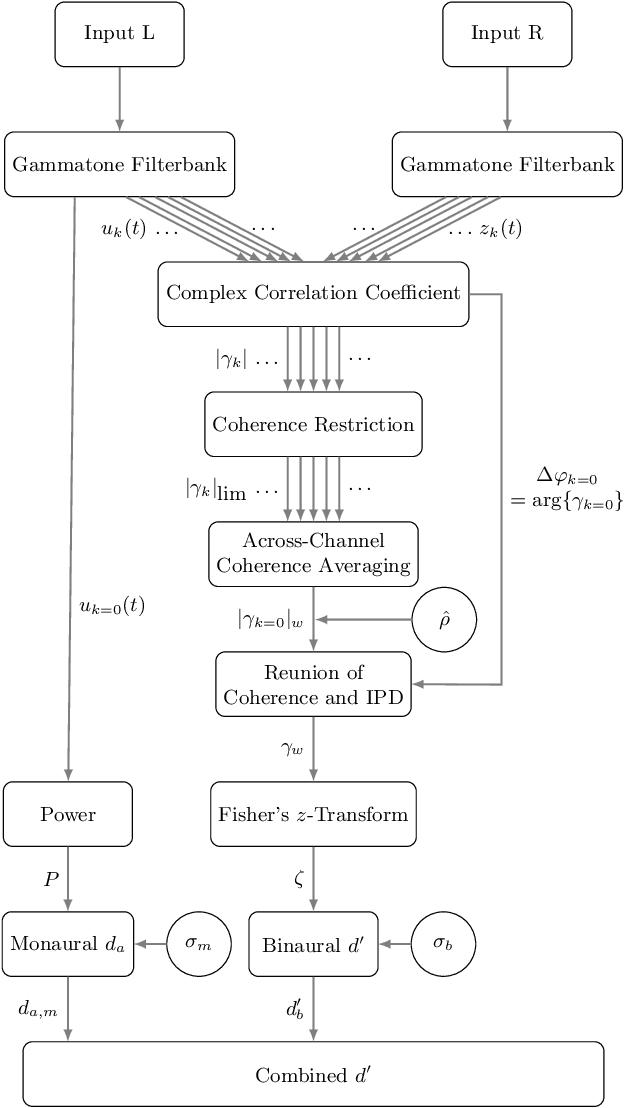
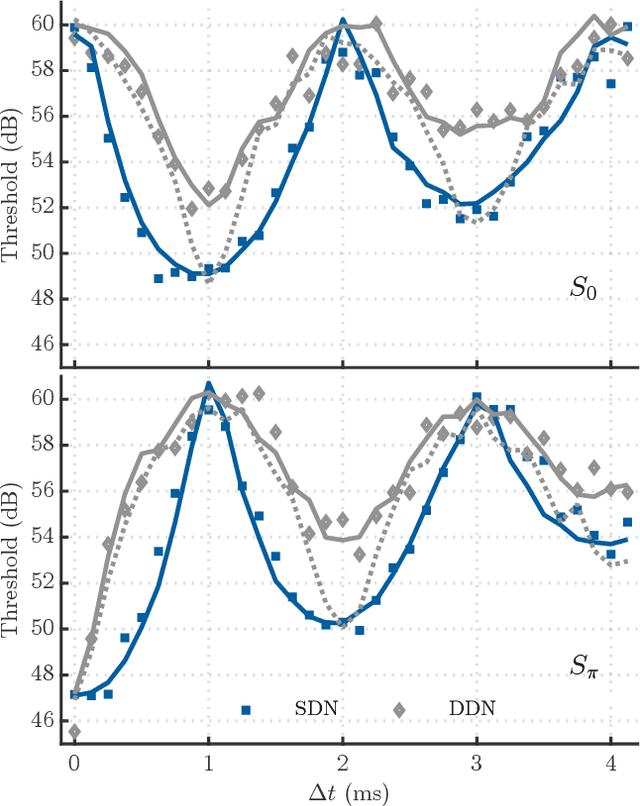
Abstract:Differences in interaural phase configuration between a target and a masker can lead to substantial binaural unmasking. This effect is decreased for masking noise having an interaural time difference (ITD). Adding a second noise with the opposite ITD further reduces binaural unmasking. Thus far, simulation of the detection threshold required both a mechanism for internal ITD compensation and an increased binaural processing bandwidth. An alternative explanation for the reduction is that unmasking is impaired by the lower interaural coherence in off-frequency regions caused by the second masker (Marquardt and McAlpine 2009, JASA pp. EL177 - EL182). Based on this hypothesis the current work proposes a quantitative multi-channel model using monaurally derived peripheral filter bandwidths and an across-channel incoherence interference mechanism. This mechanism differs from wider filters since it is moot when the masker coherence is constant across frequency bands. Combined with a monaural energy discrimination pathway, the model predicts the differences between single- and double-delayed noise, as well as four other data sets. It can help resolving the inconsistency that simulation of some data sets requires wide filters while others require narrow filters.
Prediction of tone detection thresholds in interaurally delayed noise based on interaural phase difference fluctuations
Jul 01, 2021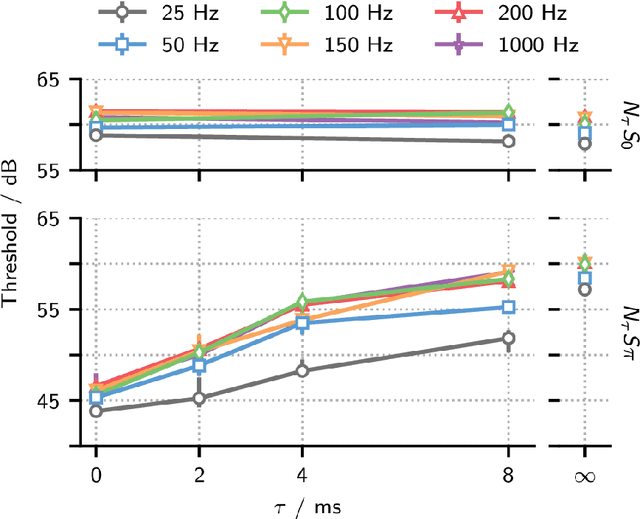
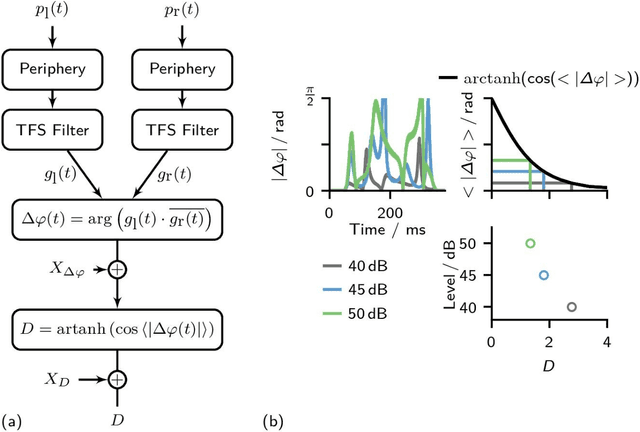
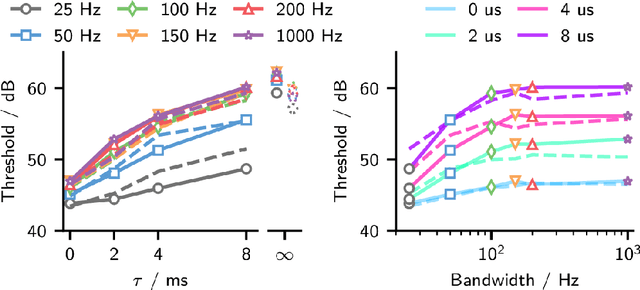
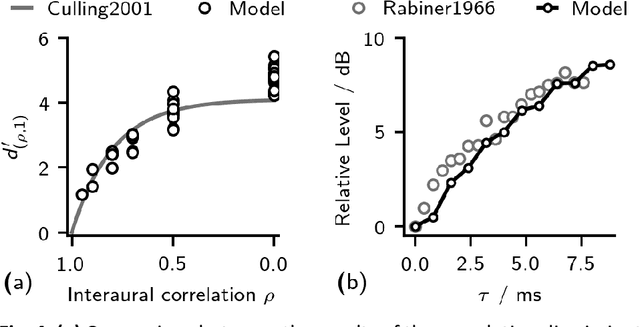
Abstract:Differences between the interaural phase of a noise and a target tone improve detection thresholds. The maximum masking release is obtained for detecting an antiphasic tone (S$\pi$) in diotic noise (N0). It has been shown in several studies that this benefit gradually declines as an interaural delay is applied to the N0S$\pi$ complex. This decline has been attributed to the reduced interaural coherence of the noise. Here, we report detection thresholds for a 500 Hz tone in masking noise with up to 8 ms interaural delay and bandwidths from 25 to 1000 Hz. When reducing the noise bandwidth from 100 to 50 and 25 Hz, the masking release at 8 ms delay increases, as expected for increasing temporal coherence with decreasing bandwidth. For bandwidths of 100 to 1000 Hz, no significant difference was observed and detection thresholds with these noises have a delay dependence that is fully described by the temporal coherence imposed by the typical monaurally determined auditory filter bandwidth. A minimalistic binaural model is suggested based on interaural phase difference fluctuations without the assumption of delay lines.
 Add to Chrome
Add to Chrome Add to Firefox
Add to Firefox Add to Edge
Add to Edge